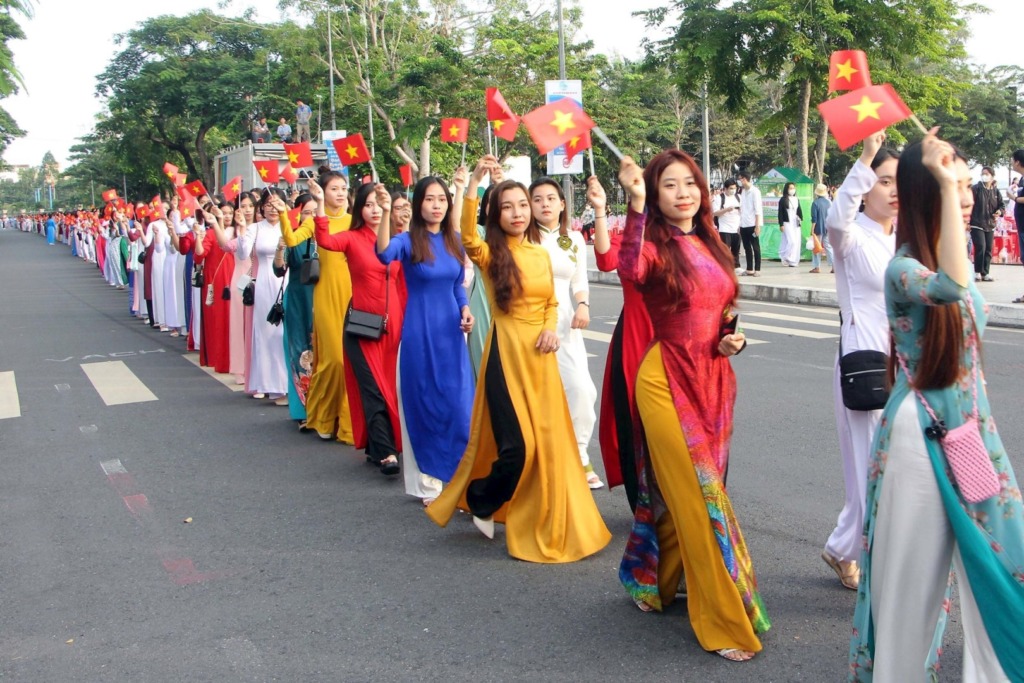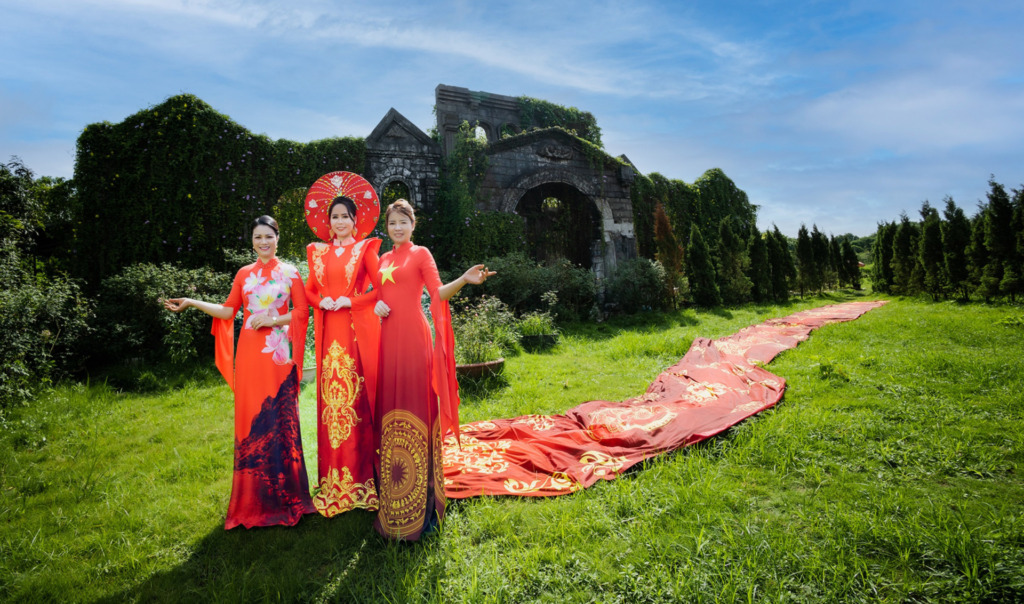From ancient dynasties to international fashion runways, the áo dài has always been a symbol of Vietnamese beauty. Though it has evolved over time, its core values remain unchanged: elegance, sophistication, and national pride. But did you know that it was Empress Nam Phương who elevated the áo dài to the status of a national icon?

Empress Nam Phương: The Modern Symbol of Áo Dài
In 1934, within the ancient walls of Huế’s Imperial City, Empress Nam Phương stood gracefully in a golden áo dài, shimmering under the radiant sunset. As the last empress of the Nguyễn Dynasty, she was admired not only for her intelligence and beauty but also for her refined and elegant demeanor.

Despite having access to haute couture gowns from Paris, she consistently chose to wear the traditional áo dài at important events, embracing it as a powerful representation of Vietnamese identity. During a time when Western culture was rapidly influencing Indochina, the image of an empress in an áo dài was more than just a fashion statement—it was a harmonious blend of tradition and modernity, a testament to national pride.
Áo Dài: From Traditional Garment to Cultural Icon
1. History and Evolution
The áo dài dates back to the 17th century, originally designed as a loose-fitting tunic worn by both men and women. Over time, the female version evolved into a more form-fitting silhouette that accentuated the natural grace of Vietnamese women.
In the 1930s, artist Cát Tường (Le Mur) revolutionized the design by making it slimmer, with a higher collar and longer sleeves, enhancing its elegance. From that point forward, the áo dài became the signature attire of Vietnamese women—both graceful and sophisticated.
2. Structure and Fabric
A traditional áo dài consists of two main parts:
✔️ A long, form-fitting tunic with slits on both sides for ease of movement.
✔️ A pair of wide-legged pants, usually made of silk or satin, balancing elegance with comfort.
The choice of fabric varies—from silk, brocade, to delicate tulle—each bringing a unique texture and aesthetic. Hand-embroidered patterns often carry special meanings, such as lotus flowers symbolizing purity or dragon and phoenix motifs representing nobility and power.
Áo Dài – A Timeless Symbol of Vietnamese Women
💎 Modest yet alluring – Without being revealing, the áo dài gracefully enhances the wearer’s figure, embodying the elegance and sophistication of Vietnamese women in both traditional and modern forms.

🎨 A masterpiece of craftsmanship – Each áo dài is a work of art, showcasing Vietnamese culture through intricate embroidery and delicate patterns. Beyond being a national treasure, it has inspired global fashion houses such as Dior, Ralph Lauren, and Guo Pei, securing its place on the world fashion map.
🏛 A symbol of identity and pride – Worn at festivals, weddings, and diplomatic events, the áo dài is also a powerful statement on international beauty stages. When Thanh Thủy was crowned Miss International 2024 in a flowing áo dài, the world was captivated. This moment reaffirmed that the áo dài is more than just a garment—it is a cultural emblem and a source of national pride.
If you’ve never worn an áo dài, you should try it at least once. Not only will you see your own beauty in a new light, but you will also feel the essence of an entire culture woven into every stitch.